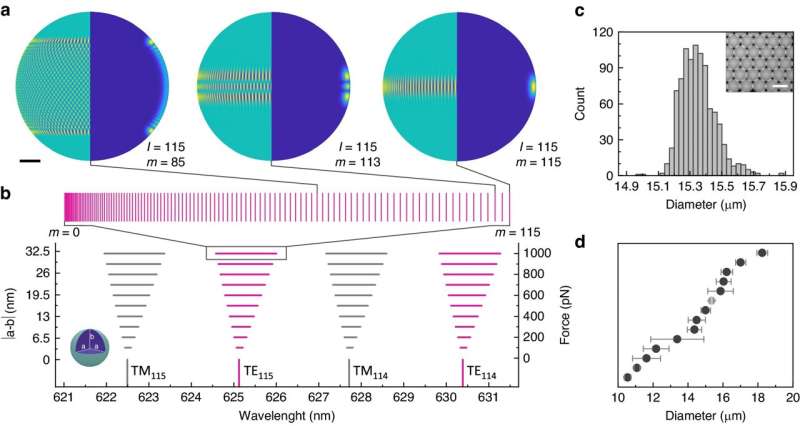This article has been reviewed according to Science X's editorial process and policies. Editors have highlighted the following attributes while ensuring the content's credibility:
fact-checked
peer-reviewed publication
trusted source
proofread
'Squishy' lasers could reveal how tumors and babies grow

New "squishy" lasers could help solve the mystery of the biological forces that control the development of embryos and cancerous tumors.
Fundamental biological processes driven by mechanical forces invisible to the human eye are currently poorly understood by scientists. Now a team of physicists at the University of St Andrews and the University of Cologne have developed a new way to precisely measure the forces exerted by biological cells.
Their innovative technique could transform our understanding of the development of human embryos and cancerous tumors. The research has been published in Light: Science & Applications.
"Embryos and tumors both start with just a few cells," explained Professor Malte Gather from the University of St Andrews. "It is still very challenging to understand how they expand, contract, squeeze, and fold as they develop. Being able to measure biological forces in real-time could be transformative. It could hold the key to understanding the exact mechanics behind how embryos develop, whether successfully or unsuccessfully, and how cancer grows."
The research team developed "squishy" microlasers that can be injected directly into embryos or mixed into artificial tumors.
Professor Marcel Schubert, from the University of Cologne, said the microlasers are actually droplets of oil that are doped with a fluorescent dye.
He said, "As the biological forces get to work, the microlasers are squished and deformed by the cells around them. The laser light changes its color in response and reveals the force that's acting upon it."
This innovation allows researchers "to measure and monitor biological forces in real time," Professor Schubert noted, adding that it works "in thick biological tissue where other methods cannot be applied."
The oil and fluorescent dye used to create the microlasers are made from non-toxic, readily available materials, ensuring they do not interfere with biological processes. This aspect makes the technology not only effective but also commercially viable.
The researchers tested their method on fruit fly larvae, to see how they developed, as well as in artificial tumors made from brain tumor cells, so-called tumor spheroids.
Professor Gather added, "We measured the 3D distribution of forces within tumor spheroids and made high-resolution long-term force measurements within the fruit fly larvae."
The team is now seeking funding to adapt their method for clinical trials, aiming to extend its application to larger cell systems.
Professor Marcel Schubert explained, "Almost all existing techniques to measure forces need an almost transparent sample, which restricts these techniques to very thin layers of cells or transparent animals like zebrafish embryos or early-stage drosophila embryos.
"The other methods are optical tweezers, traction force microscopy and techniques measuring the deformations of microbeads and droplets. These look at the shape of the deformed bead, not the spectrum of the light as we do, which is why they don't work inside tissue where you can't see anything due to scattering of light."
More information: Eleni Dalaka et al, Deformable microlaser force sensing, Light: Science & Applications (2024). DOI: 10.1038/s41377-024-01471-9
Journal information: Light: Science & Applications
Provided by University of St Andrews

















